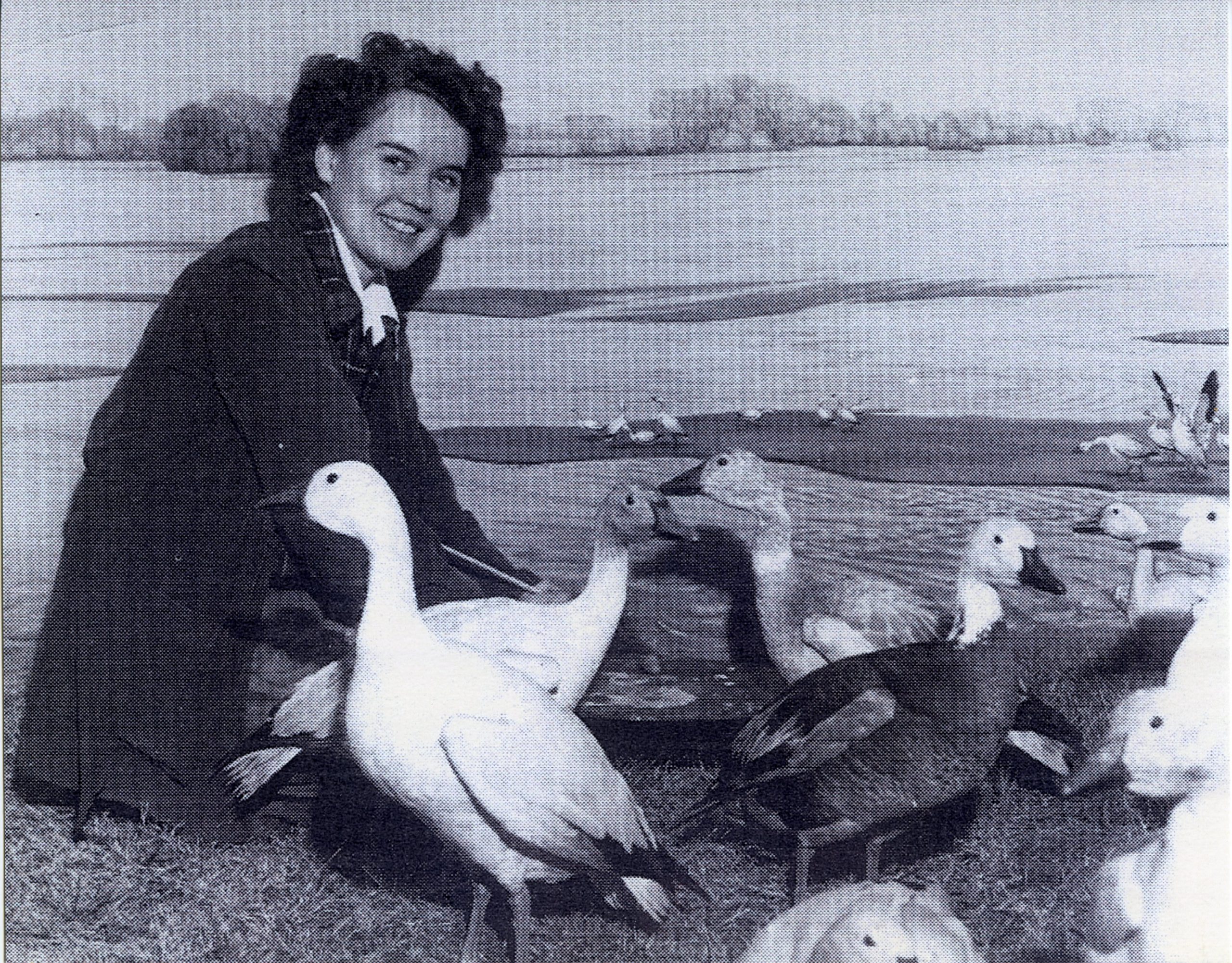
(above) Iris painting a Hastings Museum diorama.
Iris Nunley
1923-2017
Ada “Iris” Dougherty Nunley was a student at Hastings College, majoring in Language Art. Her instructor, Helen Tilden, notified her that Hastings Museum founder, Albert Brooking was looking to hire an art student. Iris started working for Albert in 1943. Before this date, Iris’ main art medium was pencil and crayon. It was not until painting murals at the Museum that she taught herself to mix and use paints.
Iris took flying lessons at the Hastings Airport in the summer of 1944, and had two hours of solo flight. Travel was her chief ambition. Art, aviation, and languages were a means to that end. For a wage of $25 a week, Iris painted the backgrounds of the dioramas, mounted animal skins, and completed other exhibit construction-related tasks, even dabbling in sculpture and creating life-like wax figures.
Although she had never seen some of the landscapes she painted, many museum professionals consider her work on the dioramas some of the best in the country today.
Albert spoke of Iris as the “best artist he has ever had” and wanted her to stay on with the Museum. However, in 1947, she left Hastings to attend art school in New York. She later worked at the Anchorage Museum in Alaska before returning to Nebraska, where she worked for the University of Nebraska State Museum, the Nebraska State Historical Society, and Hastings Museum.
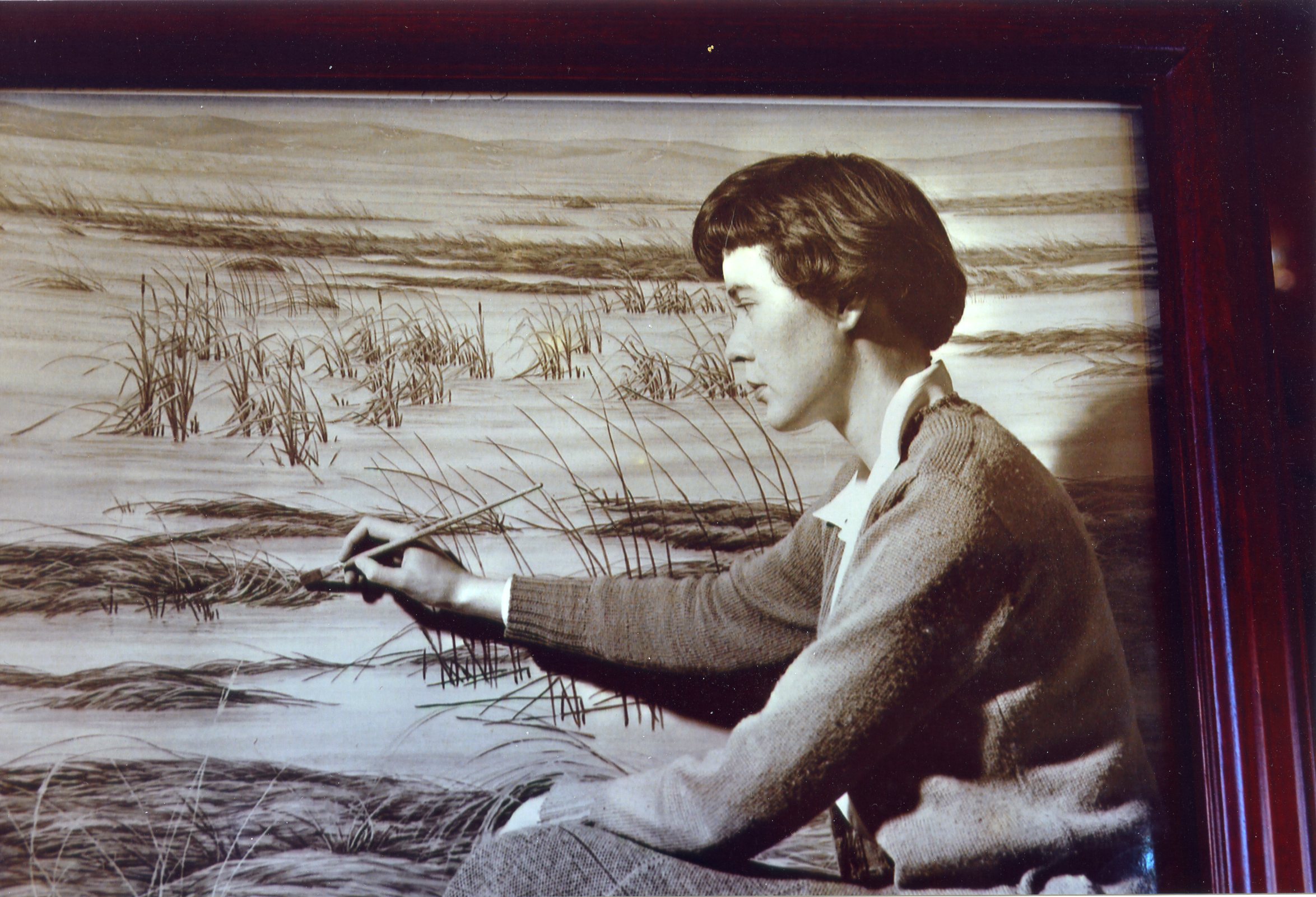
(above) Iris painting a University of Nebraska State Museum diorama.

(above) Iris as Acting Director of Anchorage Museum, 1971.
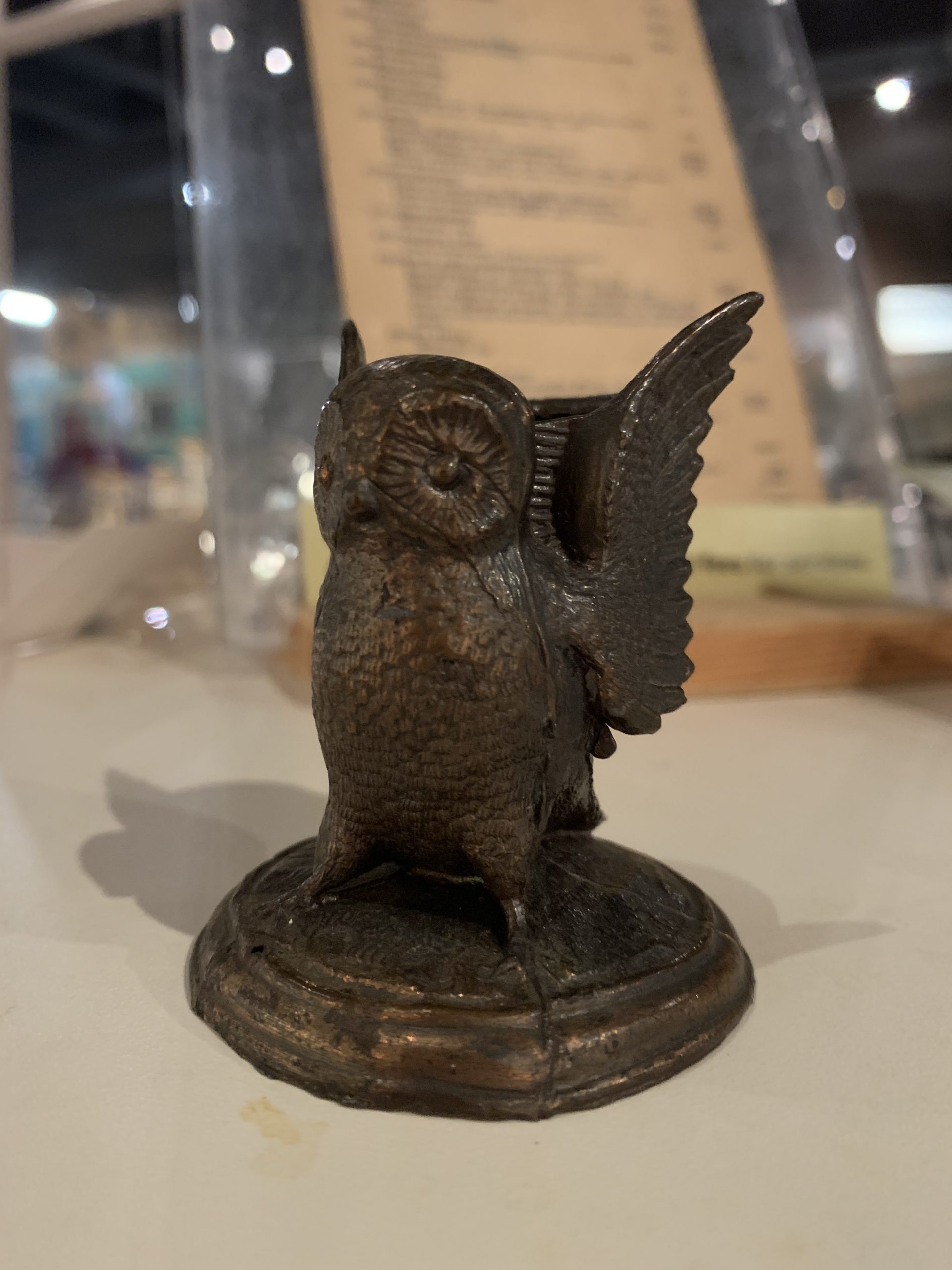
Bird Figurine, c. 1950. Hastings Museum Souvenir. Iris Daugherty Nunley sculpted the original figure used to make casts for resale in the Museum gift shop.
One of Iris’ passions was teaching and preserving fiber arts. Nearly everywhere she lived, she had some kind of fiber art club or store. She organized the Prairie Fibers Spinners and Weavers in Hastings. In her later years, Iris started her own business, Plum Nelly, in the basement of her home. She moved the business to downtown Hastings and retired at the age of 85. In 2017, she passed away at the age of 93.
Grace Simpson
1885-1966
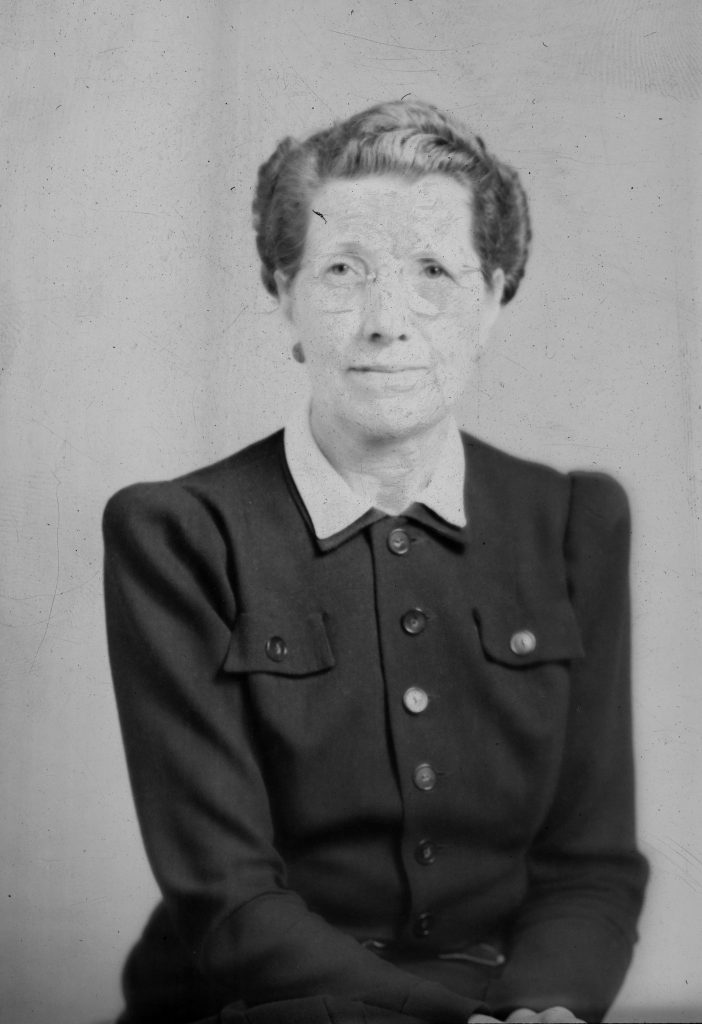
Grace Simpson. Courtesy of Hastings Tribune.
Grace Simpson’s career as a lawyer began when she was working in the law office of E.J. Lambe. She became interested in law because she liked, “the logic of it and the study of cases.” She took extension courses through LaSalle University in Chicago, attended the Practice Law Institute in New York City, and was admitted to the bar in 1935.
In 1948, she was elected President of the Adams County Bar Association, the first woman to ever serve in that capacity. In 1941, she became a justice of the peace, a position she held for 23 years. In 1950, she was admitted to practice before the Supreme Court of the United States. She continued her own private practice for a number of years.

Fee Schedule, 1938. Adams County Bar Association fees for services.
Anna May Van Orsdel
1887-1965
Anna May Van Orsdel moved to Hastings in 1929. She became the Hastings City Hostess and in 1936 started the Newcomers Bureau. When the Naval Ammunition Depot was built, she continued to welcome people to the community. She would hold weekly luncheons for new families, helping to ease the social stress of living in a new place.
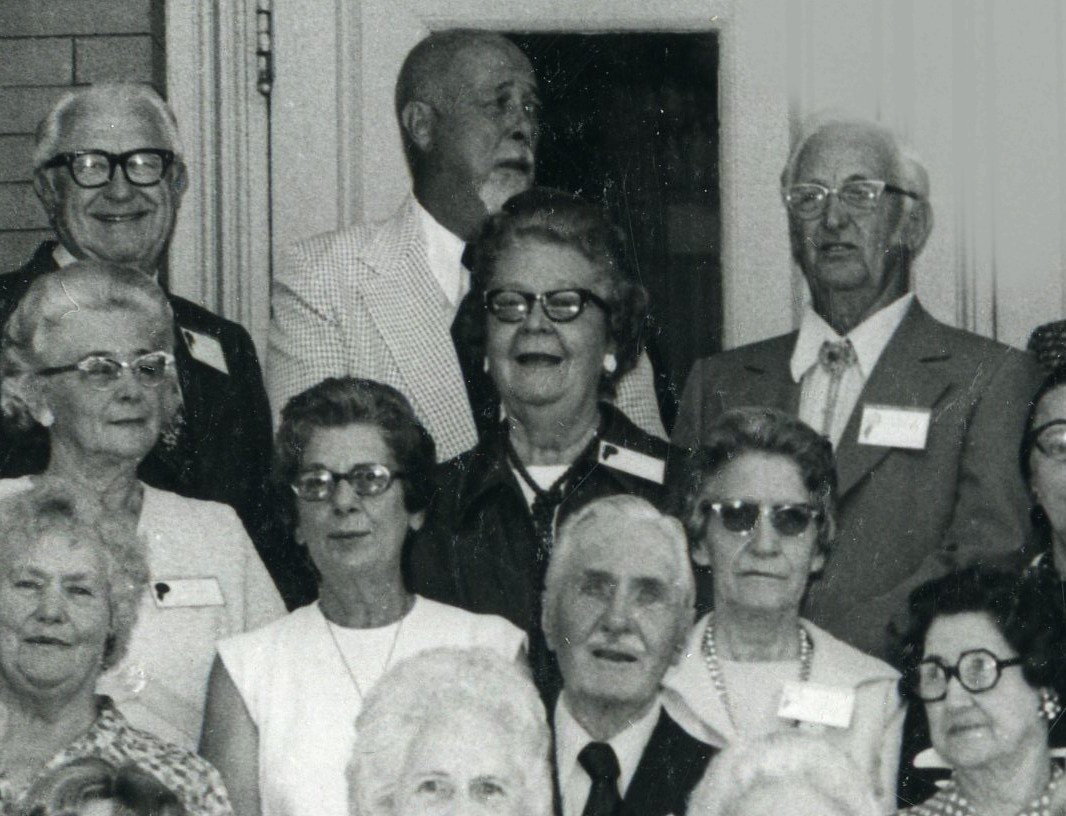
Viola Elliot, pictured center. Courtesy of Adams County Historical Society.
Viola Elliot
1906-1990
With the expansion of the Naval Ammunition Depot, Hastings faced a critical housing shortage. The solution was the creation of a housing complex on the southeast edge of Hastings called Spencer Park. The development had its own elementary school which housed 300 students.
Viola had taught for 18 years at various Adams County elementary schools and was offered the position of principal at the new school. Many of her fellow teachers urged her not to take the position. This was because Spencer Park had a stigma of being inhabited by unsavory transients. She took the job anyway and held it for 27 years.
While there, Viola and her teachers started a breakfast program, which evolved into the first hot lunch program in the city. Another of her innovations was the addition of a classroom for handicapped and special needs children. She also served as the first director of Head Start in Adams County, which was located at Spencer Park.
Fay v. New York
Fay v. New York
In 1947, this case was heard by the Supreme Court of the United States. The ruling stated that women were equally qualified with men to serve on juries but could be granted an exemption, and may serve or not, as they saw fit.
Women's Armed Services Integration Act
Women's Armed Services Integration Act
During World War I, many women enlisted as volunteers in the U.S. military services. They usually served in clerical roles. When the war ended, they were released from their duties. The same was true during World War II, when an even greater number of women volunteered in the armed forces.
The Women’s Armed Services Integration Act, signed into law by President Harry S. Truman in 1948, permitted women to serve as full members in all branches of the U.S. armed forces. The law limited the number of women who could serve in the military to 2% of the total forces in each branch. It also granted each military to branch the right to discharge women without specified cause and restricted women from flying aircraft engaged in combat, and from being assigned to ships engaged in combat.
The Equal Pay Act
The Equal Pay Act
The Equal Pay Act was passed by Congress in 1963. It promised equitable wages for the same work, regardless of the race, color, religion, national origin, or sex of the worker.
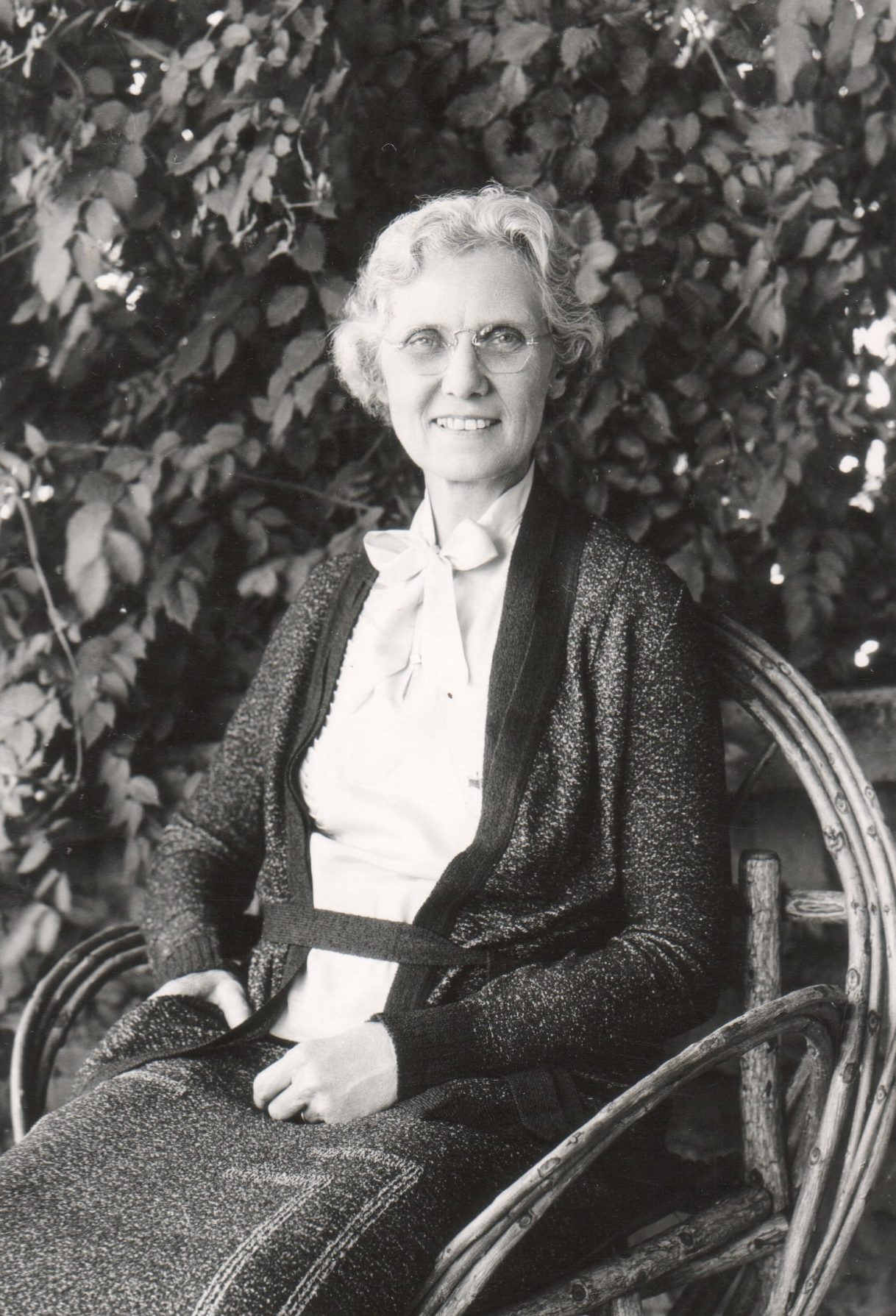
Katherine Brooking
Katherine Brooking
1876-1970
On June 14, 1913, Katherine Schneider married Albert Brooking, future founder of the Hastings Museum. Katherine shared Albert’s appreciation of natural history and was one of Nebraska’s outstanding authorities on birds. She spoke at many events on the topic. Her childhood days in Michigan and northern Ohio also nurtured her interest in American pioneer history. She supported her husband’s dream of opening a museum and was by his side throughout the long process.
She would travel with him on collecting expeditions, especially when he was looking for birds.
She was also very business oriented and aided Albert in the financial management of his Museum.
Following Albert’s unexpected passing in January 1946, Katherine became Interim Director of the Hastings Museum. Later that same year, she pushed to hire W. E. Eigsti as the new Museum director. She stayed on full time as deputy director and office secretary. Together Eigsti and Katherine pledged that the Museum would be carried on exactly where Albert had left off. They endeavored to give the public an appreciation of natural history and pioneer American history and culture. Katherine resigned as deputy director in 1949, but remained on staff as a part time employee and in an advisory capacity.
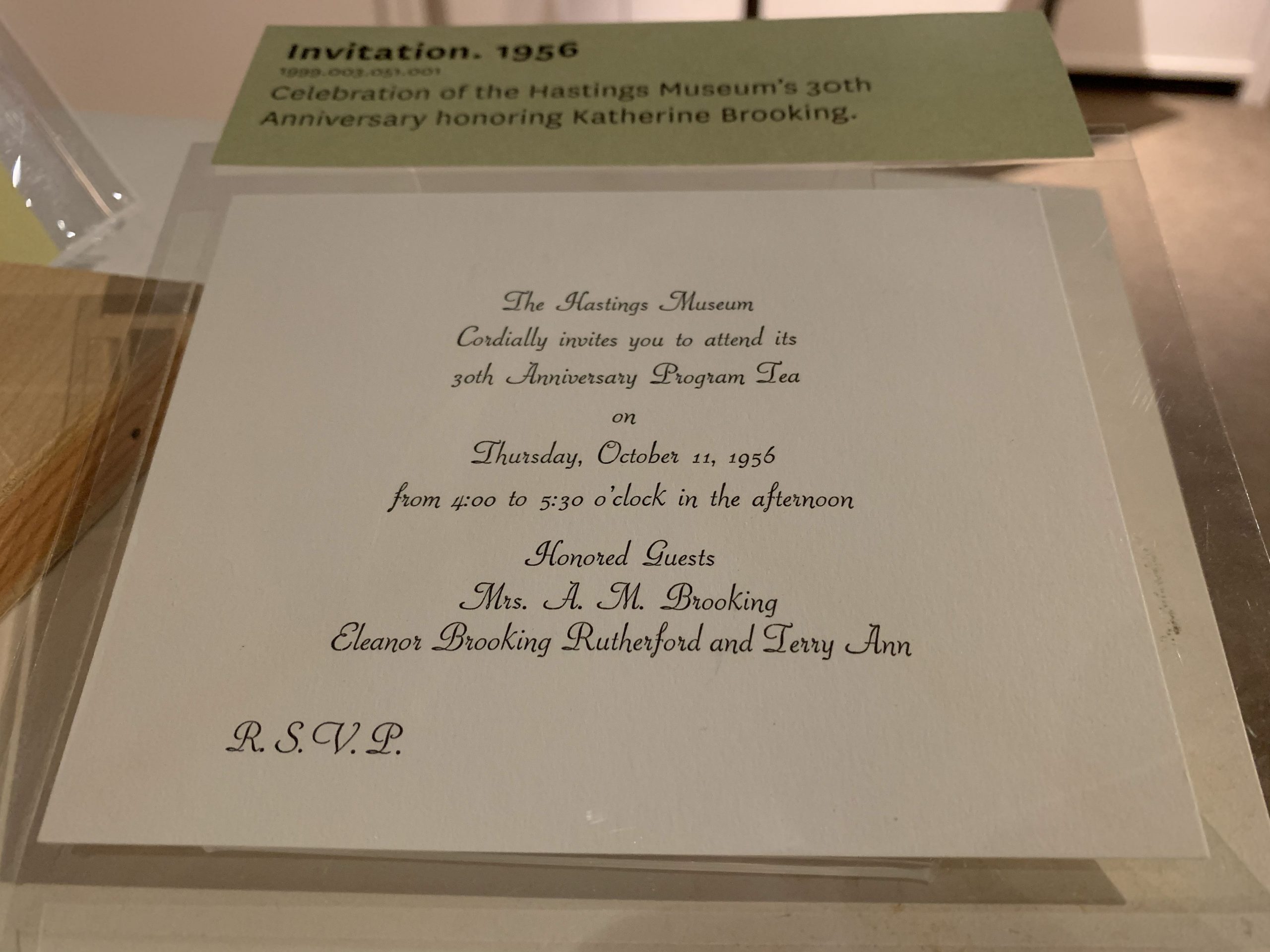
Invitation, 1956. Celebration of the Hastings Museum’s 30th Anniversary honoring Katherine Brooking.
Faye Mullen
1931-2006
Faye Mullen was born and raised in Hastings. She was known for promoting the welfare of Hastings’ African-American community. In 1973, Faye was appointed director of the Adams County Head Start, and was key in providing education; nutrition; and medical, dental, social, and mental health services to low-income children and children of color in Hastings.
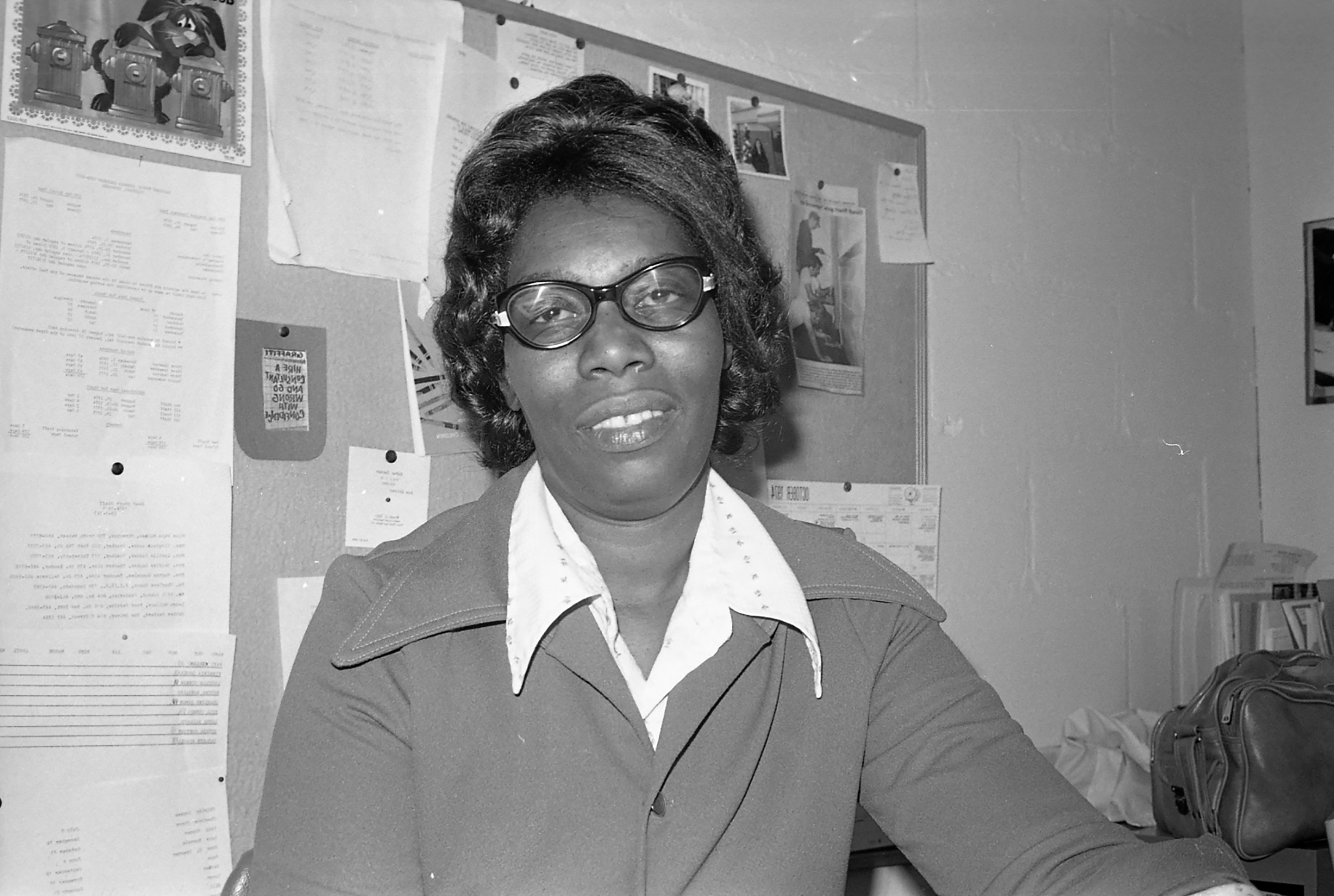
Faye Mullen at Headstart, 1974. Courtesy of Hastings Tribune.
In 1977, Mayor Robert Allen appointed her to the City Council 1st Ward seat. This made her the first African-American city councilwoman in the state of Nebraska. She was key in passing legislation for widening 2nd Street between Burlington and Marian Roads, as well as getting federal and state funding for the creation of Brickyard Park.
Faye was chairwoman of the Housing Authority Board, on the YWCA Board of Directors, and a member of the Hastings Business and Professional Women’s Club, the Eagles, VFW, and Hastings African-American Awareness Committee.
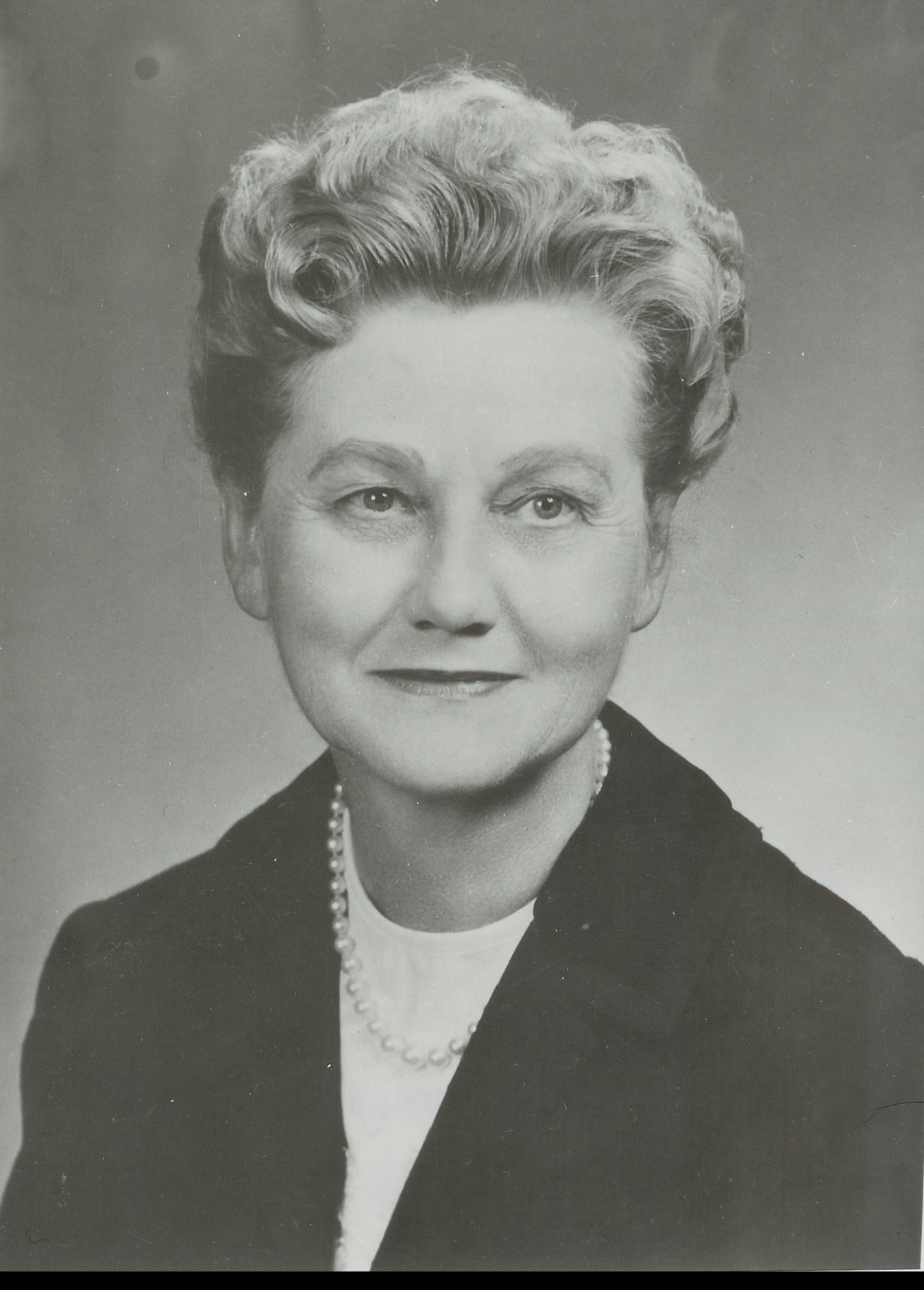
Beth Marvel Marti. Courtesy of Adams County Historical Society.
Elizabeth Marvel Marti
1904-1992
Elizabeth first came to Hastings in 1921 to attend Hastings College. After college, she married and had children, while becoming active in the community of Hastings. She served on the Hastings Library and Museum boards, as well as participated in the local YWCA. While she served on the Hastings Public Schools board, she advocated for school lunch programs, driver’s education, and swimming instruction for every student.
She was particularly proud of establishing of a local mental health clinic with funds from the YW Public Affairs Committee.
Beth was elected to the National YWCA Board in 1951, becoming President of the National Board of Directors in 1961. While president, she strived to eliminate segregation from the YWCA by creating the Office of Racial Justice. The YWCA’s current slogan, “Eliminating Racism, Empowering Women,” was adopted in 1970 under the direction of Beth. She also became the first female President of the YWCA’s Board of Trustees in 1974. Through the YWCA, she was also involved with the creation of Project Head Start, the precursor to the Head Start we know today.

